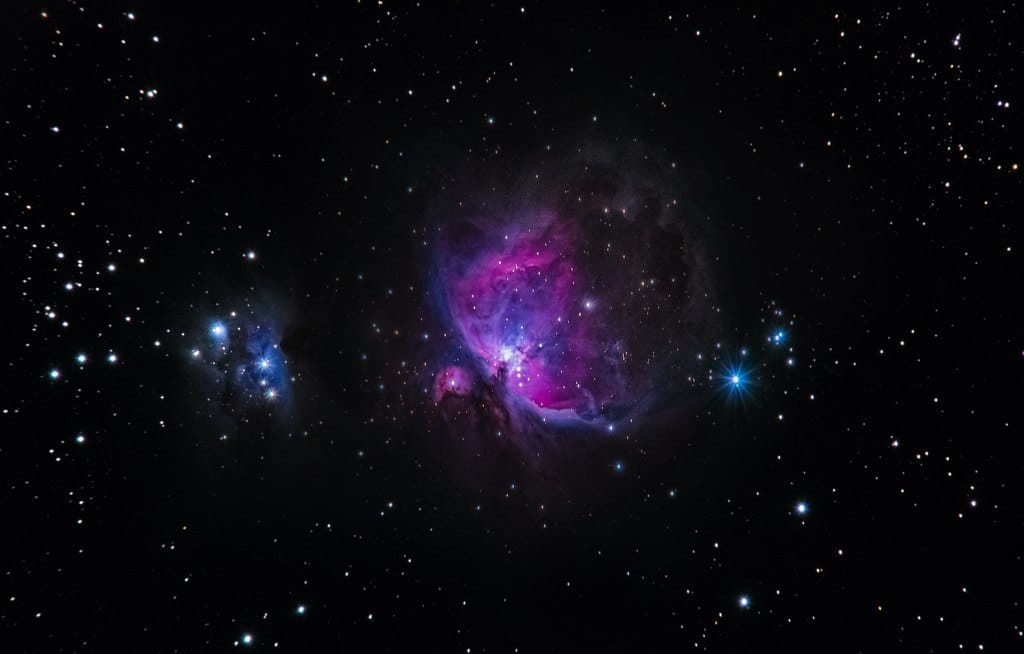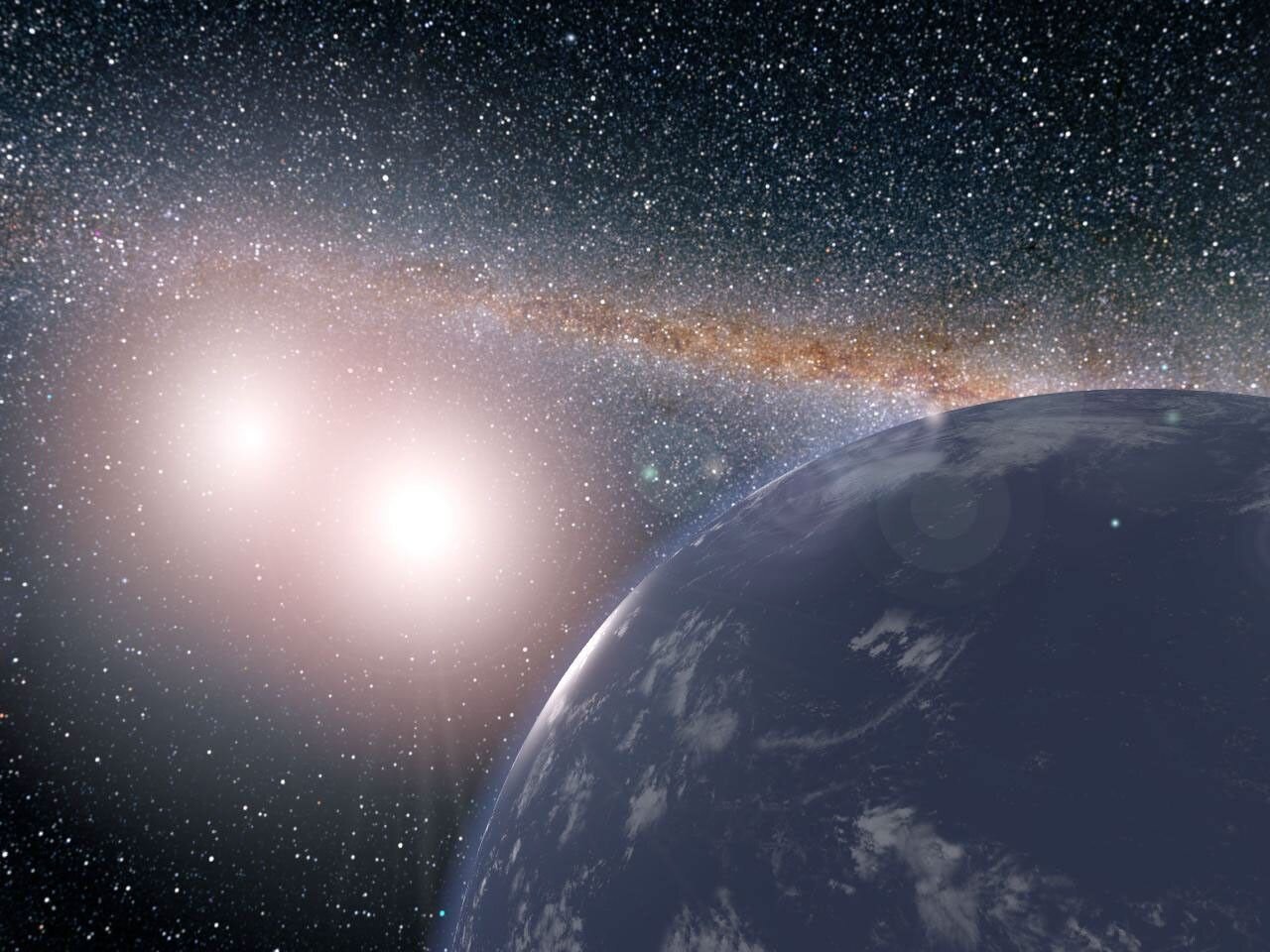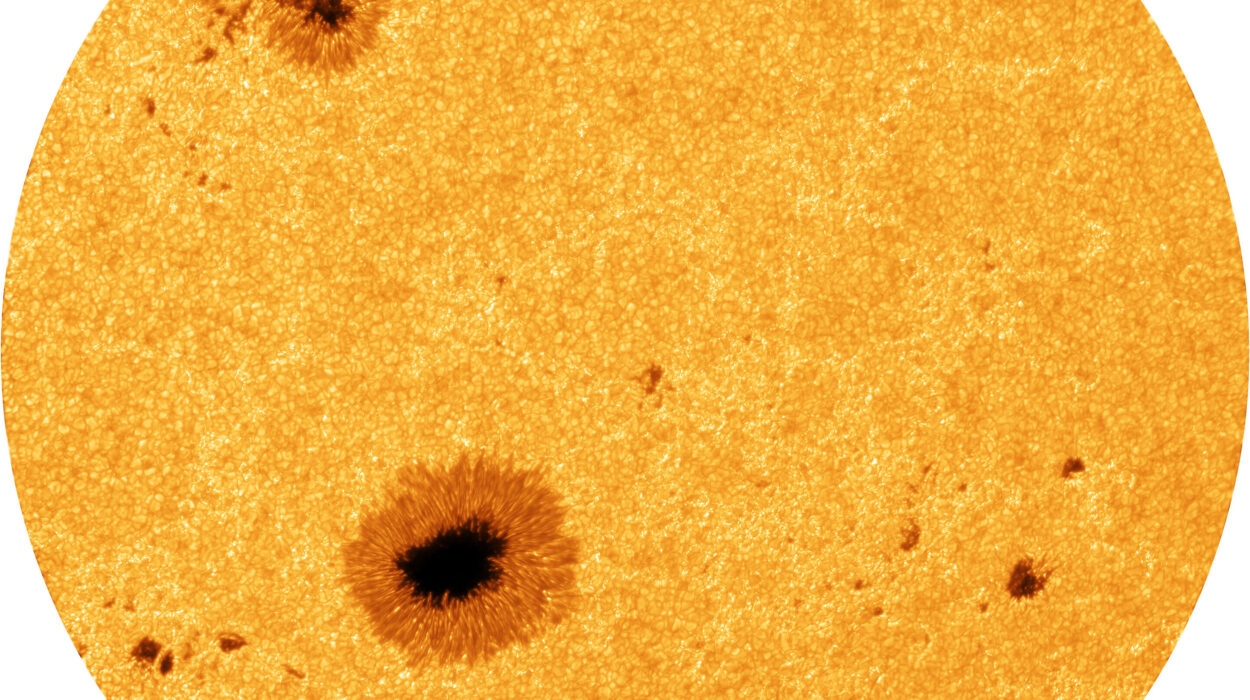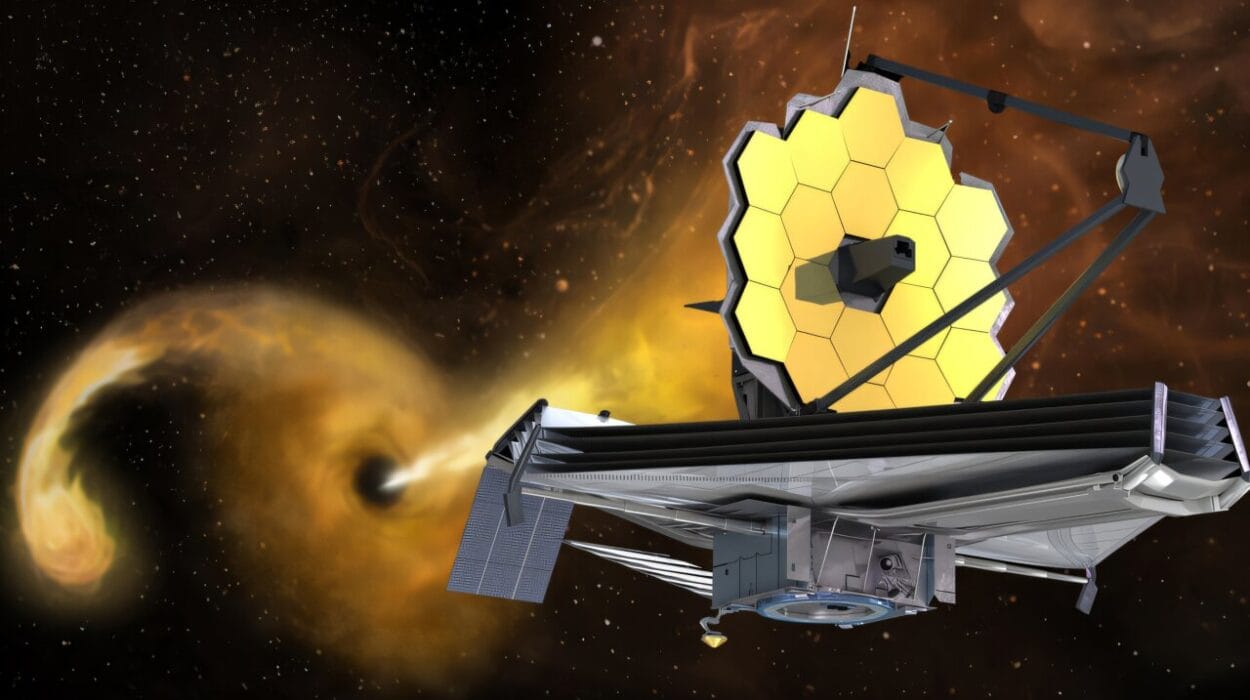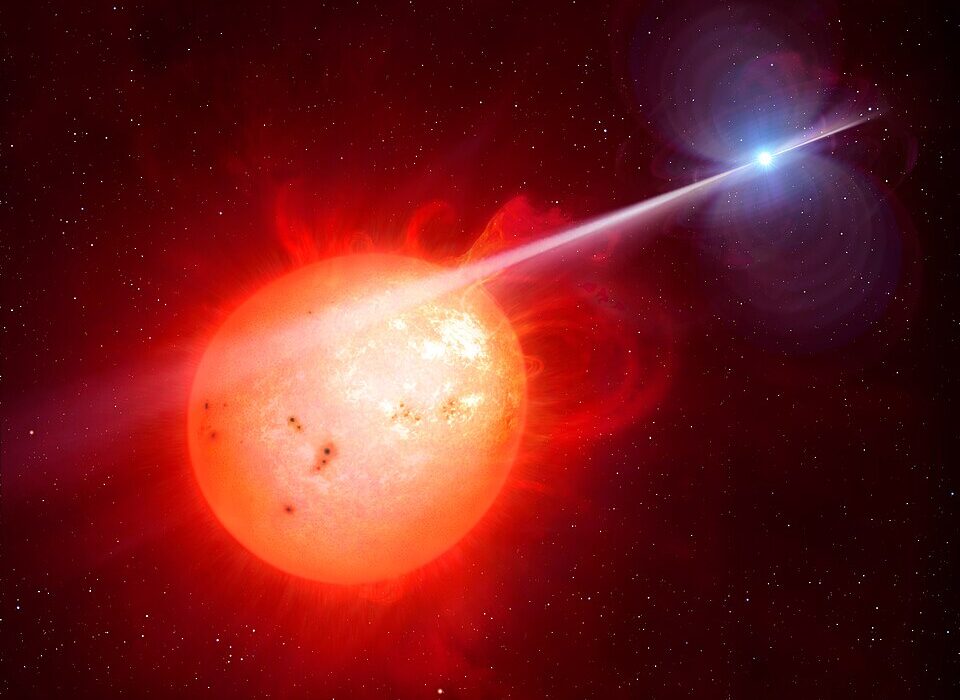Ever since humans first looked up at the night sky, one question has echoed across generations, across cultures, across entire civilizations: Are we alone?
It is not just a question of science, but of identity. If the universe is vast beyond comprehension, with galaxies that number in the hundreds of billions and stars that stretch into the trillions, then how could Earth—this pale, trembling dot—be the only place where life has arisen? Could it be that somewhere, orbiting some distant sun, other beings are wondering the same thing about us?
Astronomy has long wrestled with this cosmic mystery. In recent decades, our telescopes have pierced the veil of darkness farther than ever before, scanning exoplanets, decoding starlight, and listening—quite literally—for whispers in the void. And yet, no definitive answer has emerged.
But to understand where we might find life, we must first ask what, exactly, we’re looking for.
The Ingredients of Life—And the Crucible of Worlds
All life on Earth, no matter how complex or simple, is based on a few key ingredients: carbon, water, energy, and time. These elements—combined in the right environment—create a kind of cosmic chemistry set capable of astonishing complexity.
The universe, as it turns out, is rich in the raw materials. Carbon is forged in the hearts of dying stars and spread across galaxies. Water, in the form of ice, vapor, and even oceans, has been found on moons, planets, and comets. Energy pours out of stars, radiates from planetary interiors, and sometimes crackles from the vacuum of space itself.
For most of the 20th century, our understanding of planets was limited to the few orbiting our Sun. Earth seemed unique—temperate, liquid-water-rich, protective atmosphere. Venus was a hellish greenhouse, Mars a dusty corpse, Jupiter a gas giant too violent and stormy for life. And beyond them? Only guesses.
That all changed in 1995, when the first exoplanet was confirmed. Now, over 5,600 such worlds have been cataloged. Some are super-Earths, larger and rockier than our planet. Others are water worlds, shrouded in clouds and mist. Some hug their stars too tightly to be habitable; others drift in wide, cold orbits. But a rare few lie in a region astronomers call the “habitable zone”—a sweet spot where temperatures allow liquid water to exist.
It’s on these planets that the search for life intensifies.
Listening to the Silence
In 1960, the astronomer Frank Drake pointed a radio telescope at two stars—Tau Ceti and Epsilon Eridani—and listened. He was hoping to detect artificial radio signals: a cosmic “hello” from alien intelligence.
The silence that followed was deafening. But it didn’t discourage him. Instead, it inspired the Drake Equation, a mathematical framework for estimating the number of active, communicative civilizations in our galaxy.
The equation multiplies several uncertain factors: the rate of star formation, the fraction of stars with planets, the number of habitable planets per star, the fraction that develop life, the fraction that evolve intelligent beings, the fraction that build detectable technologies, and finally—the lifespan of such civilizations.
Drake’s equation didn’t provide an answer, but it reframed the question. It made the search for extraterrestrial life a scientific endeavor, not just a philosophical one.
Since then, projects like SETI (Search for Extraterrestrial Intelligence) have scanned the skies for patterns in the noise. They’ve used radio telescopes, optical lasers, and algorithms trained to detect anomalies. But despite decades of listening, the universe remains quiet. Or perhaps, more accurately, we haven’t been listening in the right way—or long enough.
The Fermi Paradox and the Cosmic Mirror
The silence brings us to a troubling contradiction known as the Fermi Paradox.
Named after physicist Enrico Fermi, the paradox asks: If intelligent life is common in the universe, then where is everyone?
The galaxy is old—more than 13 billion years. Civilizations with even modest technological abilities could, in theory, colonize an entire galaxy within a few million years. So if life is abundant, why don’t we see spacecraft, radio signals, megastructures, or even cosmic graffiti scrawled across the stars?
Many theories try to resolve this paradox.
One possibility is the “Rare Earth” hypothesis—that complex life is vanishingly rare. Maybe it takes an improbable series of events: a stable star, a large moon, plate tectonics, magnetic fields, and just the right chemical soup.
Others suggest civilizations may self-destruct before spreading. Perhaps intelligence is self-limiting—that with great power comes great peril. Nuclear war, environmental collapse, AI run amok—there are countless ways to go extinct.
Another theory, the “Great Filter,” posits that there’s a bottleneck in evolution—a step so difficult that almost nothing gets through. That filter might lie behind us (suggesting we are rare survivors) or ahead of us (a dark warning).
And some speculate we are simply blind. Maybe advanced civilizations are communicating in ways we can’t yet detect—using quantum entanglement, gravitational waves, or dimensions beyond our own.
Or perhaps, like wise elders, they watch us silently, waiting for us to grow up.
The Martian Mirage and Ocean Worlds Below Ice
Mars has long captivated the imagination. In the 19th century, astronomers believed they saw canals—evidence, they thought, of a dying civilization.
Those canals turned out to be optical illusions, but the Red Planet still holds promise.
Today, we know that ancient Mars once had rivers, lakes, and possibly even oceans. NASA’s rovers—Spirit, Opportunity, Curiosity, and now Perseverance—have found signs of past water, clay minerals, and organic compounds. Mars may have had the right conditions for microbial life billions of years ago.
But if life existed, where did it go?
Perhaps it still lingers, hidden in salty subsurface lakes or beneath polar ice caps. Missions like Europe’s ExoMars rover and future sample return efforts may finally give us answers.
Even more intriguing are the icy moons of Jupiter and Saturn. Europa, Ganymede, and Enceladus are all believed to harbor vast oceans beneath their frozen shells. Enceladus, in particular, has stunned scientists by spewing water vapor and organic molecules into space through geysers.
These worlds, warmed by tidal flexing from their giant hosts, could be cradles for alien microbes. They don’t need sunlight—just water, heat, and chemistry. They challenge the notion that life must cling to Earth-like conditions.
Exoplanets and the Shadows of Life
The next frontier in the search for life lies light-years away.
Thanks to missions like Kepler, TESS, and now the James Webb Space Telescope, astronomers can not only discover planets but begin to study their atmospheres. By observing starlight filtering through a planet’s atmosphere during a transit, scientists can detect gases like oxygen, methane, carbon dioxide, and water vapor.
These gases, particularly in certain combinations, may hint at biological activity.
For example, on Earth, oxygen and methane coexist only because life constantly replenishes them. Without plants, microbes, and animals, they’d disappear. If we detect a similar atmospheric signature on a distant exoplanet, it might be the first true clue of life beyond Earth.
But caution is essential. Non-biological processes can mimic biological signatures. Volcanism, photochemistry, and other geophysical factors can create false positives. That’s why scientists are developing increasingly sensitive instruments and models to distinguish the real from the illusory.
One such effort is the study of “biosignatures” and “technosignatures.” Biosignatures include gases, pigments, and even light polarization from vegetation. Technosignatures go a step further—looking for signs of technology itself: satellite constellations, city lights, industrial pollutants, or narrow-band radio signals.
In essence, we’re not just looking for life. We’re looking for intelligence.
The Ethics of Contact and the Fear of the Unknown
Suppose, just suppose, we do find something—microbes on Mars, plankton in Europa’s oceans, or an unmistakable radio transmission from a nearby star.
What then?
The discovery of alien life—any alien life—would be the most profound moment in human history. Religions would grapple with new meaning. Science would race to understand. Cultures would react with awe, fear, joy, or panic.
The implications are staggering. Are they friend or foe? Do they know about us? Should we respond? Should we hide?
This isn’t just theoretical. In 1974, we broadcast the Arecibo Message—a radio signal encoded with human information—toward the Hercules constellation. We’ve also attached golden records to the Voyager spacecraft, containing music, greetings, and pictures of life on Earth.
Some scientists, like Stephen Hawking, warned against such efforts. “Meeting a more advanced civilization,” he said, “could be like Native Americans encountering Columbus. That didn’t turn out so well.”
Others argue that any civilization capable of interstellar travel must have overcome aggression—or they would not have survived long enough to explore.
But until contact happens, these debates remain speculative. Still, they remind us that astronomy is not just about discovering what’s out there, but deciding who we want to be when we are found.
The Time Dimension—and the Problem of Distance
The universe is not just vast in space—it’s vast in time.
Our galaxy alone is over 13 billion years old. Earth has existed for 4.5 billion. Humanity? A mere 300,000 years. Radio? Only about a century.
The odds of two civilizations existing at the same time—within listening range, using similar technologies—may be extraordinarily low. It’s possible alien civilizations existed millions of years ago and have since vanished. Or that others will rise long after we’re gone.
And distance is another cruel barrier. Even light takes years to travel from star to star. Communicating across such chasms is like sending a letter across millennia. By the time our message arrives, the recipient may no longer exist—or be listening in a different language altogether.
This doesn’t make the search futile. It makes it sacred.
To search the stars is to leave a message in a bottle and cast it into a cosmic ocean—not for immediate response, but because someone, someday, might find it and know that we once existed.
The Mirror Turned Inward
Perhaps the greatest value of the question “Are we alone?” is not in the answer, but in the journey it inspires.
It forces us to look at life on Earth with reverence. It humbles our ego and expands our empathy. It pushes science forward—driving innovations in telescopes, biology, data science, and philosophy.
In searching for life, we are also searching for ourselves—what we are, what we could be, and how fragile our place in the universe truly is.
Maybe we are alone. Maybe life is a rare miracle, and Earth is the only oasis in an endless desert. If so, then every tree, bird, whale, glacier, and child is infinitely precious.
Or maybe we are not alone. Maybe the universe teems with life—some microbial, some intelligent, some so alien we cannot comprehend it. In that case, we are part of something grander than we ever imagined.
Either way, the search is worth continuing.
Because in the end, to ask if we are alone is to ask if we matter—and the stars are still waiting for our answer.
